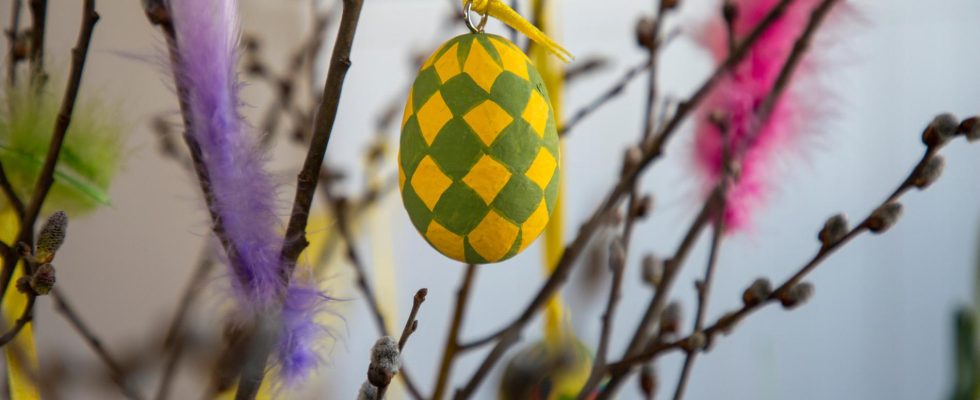unsaveSave
expand-left
full screen The rice is supposed to remind of Jesus’ suffering on the cross but has since become a pure decoration. Archive image. Photo: Martina Holmberg / TT
Eggs, sweets and Easter cookies. The Easter weekend is full of traditions and, like many holidays, they are based on a blissful mix of new and old.
Easter is a Christian and Jewish holiday, but just like Christmas, it contains a lot of traditions that have nothing to do with religion.
The fact that we put in a lot of eggs has partly a connection to religion. During Catholic times in the Nordic countries, it was forbidden to eat eggs during Lent. Eating eggs on Easter marks a turning point and symbol of Jesus’ resurrection.
But it was also around Easter that the hens started laying after the winter and there was access to eggs again.
For many, eggs were also a luxury item and were given as a nice gift just at Easter. The eggs were colored when they were boiled with plants of various kinds. At the turn of the century, it became common to use special egg colors and to give the shell a shine with pork rind.
The Easter Bunny and the Rooster
The idea of the Easter bunny came to Sweden at the end of the 19th century from Germany, where the adults since the 17th century joked with the children that the Easter bunny hid eggs it laid. But the Easter Bunny never had the same impact here as in other countries. Here, the Easter rooster retained the larger role.
The Easter Rooster often flaunts his hens and chickens on Easter eggs and Easter cards, which became common to send around the turn of the century in 1900. The Rooster comes from the Christian Easter, Jesus predicts that Judas will betray him “before the rooster goes mad”.
Easter bow tie in the 1950s
Colorful Easter Christmas is a clear example of how Christian heritage and folk elements are mixed. At first, the rice was used to be whipped with during the week before Easter, what is known as Holy Week, to remember Jesus’ suffering on the cross. A bit into the 20th century, it became common to decorate the rice brought into the home with colorful feathers and other Easter decorations. It became really popular during the 1940s and 50s.
The tradition comes from the belief that Maundy Thursday was the day the witches flew to Blåkulla and met the devil. Already in the 19th century, it is believed that especially young people dressed up as Easter men and Easter elves walked around the farms, scared children and behaved rather unruly.
During the 20th century, the tradition was taken over by smaller children who hand out Easter cards and collect sweets. The Easter Bunny outfit took a cuter form of floral headscarves and painted freckles. But the broom has remained and reminds of how the witches got to Blåkulla.
Source: Nordic Museum, Historical Museum
